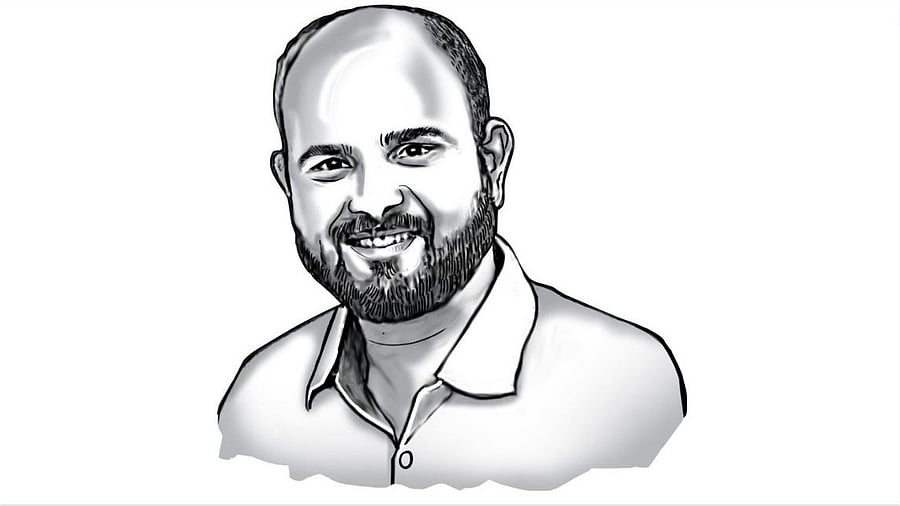
Rahul Jayaram is a teacher and writer who believes we are living through the apocalypse.
Credit: DH Illustration
Recently, Raj Thackeray, the chief of the Mumbai-centred Maharashtra Navnirman Sena (MNS), joined hands with the BJP-led NDA to fight the Lok Sabha polls of 2024. With it, the MNS has, like other regional parties, appeared to concede that it cannot win or survive on its own anymore. Powerful regional players, like the TMC in West Bengal or the DMK or even the AIADMK, nary ally to fight polls on home soil. They are regional bulwarks with grassroots control, having nurtured and consolidated their home bases over decades. Yet, the MNS, a footnote in Indian and Maharashtra politics now, merits some attention, just for the ironies it exemplifies.
In the mid-2000s, the Shiv Sena’s ageing patriarch Bal Thackeray anointed the milder Uddhav Thackeray, his son, as the future face of the party, over his volatile streetfighter nephew Raj Thackeray, a Shiv Sainik carbon-copy in the mould of his uncle. In his pomp, Bal Thackeray was a loutish critic of Congress’ dynastism in its heyday. Yet, like them, he went on to replicate the same nepotism he accused the Congress of. A miffed Raj formed the MNS, and continued with Shiv Sena-style tod-phod politics in Mumbai in the late 2000s, behaving like he were still in the 1970s and 1980s. In hindsight, for what it’s worth, Uddhav and his son Aditya Thackeray, have imparted a relative softness at a remove from the hard-line nature of Bal Thackeray. Raj looked trapped in time and it got worse over the years.
Mumbai transforms in ways that startles even Mumbaikars who may step out of it on occasion. In the post-Bal Thackeray era in Mumbai and Maharashtra politics, the landscape and the voter base that Modi and Shah have cultivated, the strength and the shenanigans of the BJP at the Centre and in Maharashtra, their harnessing the presence of the Rashtriya Swayamsevak Sangh shakhas (Maharashtra being an RSS hotbed), the manic expansion of the city, the unrelenting rush into the city of all comers from different corners of India and the world -- these have all transformed Mumbai and the collective Maharashtrian mindset. Essentially, 21st century Maharashtrian Mumbaikars whose parents belonged to working-class families aspire for material and other gains quite at a distance from their parents’ aspirations. The MNS, peopled with Bal Thackeray-admirers, worked in Mumbai with his older, dated worldview. Uddhav and Aditya Thackeray, still Sainiks who could ban a book, caught on to the transforming temperaments of their constituents a bit better. Yet, none of this has stalled Mumbai and Maharashtra from the internal and internecine mayhem we witness today with the factions in the Shiv Sena and the NCP. Sure, in all the chaos inside Maharashtra’s political parties, we mustn’t forget the relentless needling and poking that the BJP smorgasbord has facilitated.
For what it’s worth, none of the Maharashtra parties, in particular the Mumbai ones like both the factions of the Sena or the MNS, offered effectively to Mumbaikars and Maharashtrians what the AAP did to Delhi. Notwithstanding the alleged taints on the AAP -- which has kept battling a minatory Centre in Delhi -- it was rewarded for work on public services, education, health. It spoke the spiel of contemporary customer service satisfaction and aspiration, even as it cannily accommodated or negotiated Hindutva. That it was a new party that had ‘game’ makes veterans like Raj Thackeray, or even Uddhav, look like upstarts. On home turf, Raj Thackeray worked with the Maratha pride and Hindutva gameplan for so long and still came a cropper. Now, as a Maharashtrian, he sends an SOS to two powerful Gujaratis he has lit into in the past, for help in Mumbai.